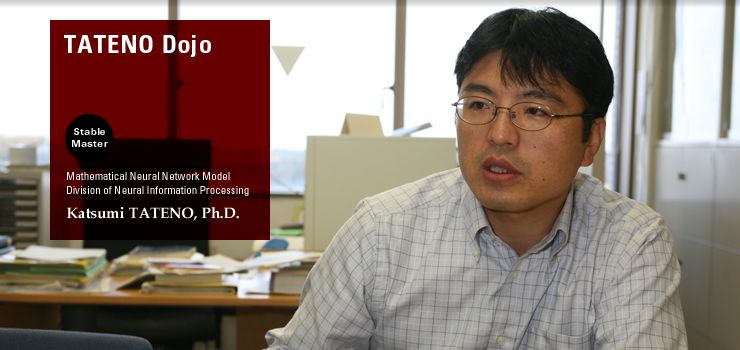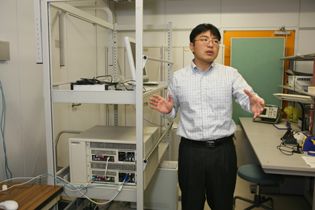 |
| |
 |
| In this laboratory, we made a mathematical neural
network model that mimics the activity of various nerve cells
in order to elucidate the structure of neural information
processing. Currently, we are working on a model of the hippocampus,
which plays a role in memory in the brain, a model related
to irregular pulse rate in heart cells, a sleep pattern model
for children with autism and a model of taste bud nerve cells.
In all of these cases, the use of mathematical models is essential
in analyzing the complex experimental data obtained from living
organisms. For example, in the study of the hippocampus, accurate
mathematical models that mimic the real thing as closely as
possible can lead to greater understanding of what memory
really is and how the brain processes information. The results
can in turn be applied to the development of new memory devices
that more closely resemble the workings of the brain. |
 |
| Even
if they attempt to make a device incorporating neural
cell mechanisms, students majoring in engineering fields
will be unable to decode the complex data obtained from
live animal experiments. If, however, they have a mathematical
model, they will be able to analyze the data and apply
it in an easily understood way to engineering fields.
In our particular field of research, which combines
several disciplines, mathematical models that bridge
the gap between life sciences and engineering are important
tools. In this program therefore, we teach students
the basic steps in making such models from how to develop
numerical formulas to how to use specialized simulation
software. We accommodate students who have experimental
data but lack the knowledge to formulate models as well
as engineering students who have never conducted live
animal experiments and have each student make their
own model. |
 |
|
|
|
|